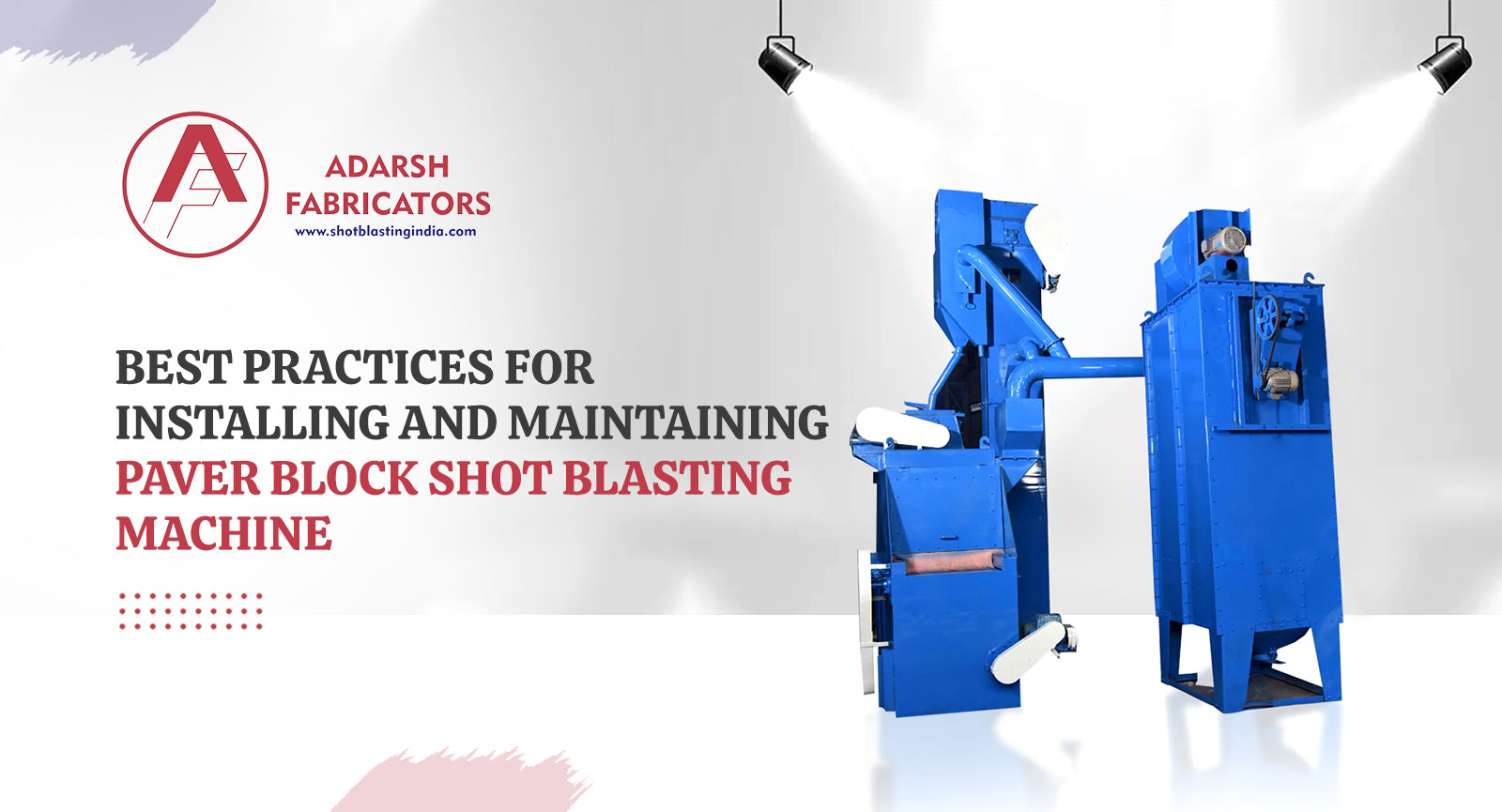
One of the most well-known types of contemporary outdoor flooring for patios, parking lots, walks, and roads is paving stones. They are currently highly appreciated in both residential and commercial structures due to their sustainability, adaptability, and aesthetic appeal. Concrete, clay, and even natural stone can be used to make paver blocks. These blocks work together to create a durable surface without breaking readily. Paver blocks are cleaned and surface-treated using a shot blasting process. A Paver Block Shot Blasting Machine is used to enhance the appearance of the paver blocks.
Long-term durability and a great deal of design flexibility are guaranteed when paver bricks are laid over a bed of sand or gravel. They are simple to install and may be built as needed for patios, driveways, or busy commercial areas. However, like any outdoor paving solution, proper installation and maintenance are essential so that they can last longer. This blog walks you through the best practices for installing and maintaining shot-blasted paver blocks.
1. Choosing the Right Paver Block Shot Blasting Machine
The first step in the process of creating high-quality shot-blasted paver blocks is selecting the right shot-blasting machine. A paver block shot blasting machine plays a critical role in achieving the desired texture and surface finish. When choosing a machine, ensure that it is capable of handling the specific size and type of paver blocks you are working with. Additionally, look for a machine that provides even blasting to prevent any inconsistencies in the finish. Regular maintenance of the blasting machine itself will also help in achieving uniform results and prolonging the life of your pavers.
2. Proper Surface Preparation
Before installing shot-blasted paver blocks, surface preparation is key. The subbase and bedding sand need to be properly prepared to ensure a strong foundation. Follow these steps:
- Excavate the Area: Remove the existing surface and ensure that the subbase is level and compacted.
- Install a Gravel Base: A gravel base helps with drainage and prevents the paver blocks from shifting over time.
- Add Bedding Sand: Spread a layer of sand over the gravel and use a leveling tool to make sure it’s perfectly even.
Properly preparing the surface will prevent your paver blocks from settling unevenly or cracking.
3. Install Shot Blasted Paver Blocks Correctly
Once the surface is prepared, you can start laying the shot-blasted paver blocks. Here are some installation tips:
- Start from the Corner: Begin laying pavers from one corner, working your way outward. This ensures an even placement and reduces the need for cutting.
- Maintain Even Spacing: Use spacers or a string line to ensure consistent gaps between the blocks. This will allow for expansion and contraction, reducing the risk of shifting.
- Tap Blocks into Place: Once placed, gently tap the pavers into position with a rubber mallet. This ensures they sit firmly in the bedding sand.
- Cut Pavers as Needed: In areas where pavers need to be cut to fit, use a wet saw or a paver block cutter for clean, precise cuts.
4. Proper Compaction and Jointing
After laying the paver blocks, it’s crucial to compact them to ensure stability. Use a mechanical plate compactor to gently tap the blocks into the bedding sand. Be careful not to damage the shot-blasted surface during this process.
Once compacted, fill the joints between the paver blocks with jointing sand. Sweep the sand into the joints, and then use the compactor again to settle the sand. This process helps prevent weeds and ensures the pavers stay in place.
5. Maintaining Shot Blasted Paver Blocks
Maintaining shot-blasted paver blocks is vital to ensure they retain their aesthetic appeal and functional benefits. Follow these best practices for maintenance:
- Regular Cleaning: Keep the surface of the pavers clean by sweeping away dirt, leaves, and debris. You can also power wash the surface occasionally to remove grime and stains. However, avoid using harsh chemicals that could damage the pavers.
- Seal the Pavers: Applying a sealant to your shot-blasted paver blocks can protect them from stains, water damage, and discoloration. Ensure that the pavers are completely dry before applying a sealant.
- Repairing Cracks and Shifting: Over time, paver blocks may shift or develop small cracks. If this happens, remove the affected pavers, re-level the base, and reinstall the pavers properly. For minor cracks, use a filler designed for paver blocks.
- Reapplying Jointing Sand: As the jointing sand settles, you may need to top up the joints periodically to prevent weeds from growing and to maintain the stability of the pavers.
6. Routine Inspections
Perform routine inspections of your shot-blasted paver block installation, especially after extreme weather conditions. Check for any shifting, cracking, or wear and tear. Early detection of issues will allow for prompt repairs, preventing further damage.
Conclusion
Shot-blasted paver blocks are an excellent choice for both residential and commercial outdoor areas. By following these best practices for installation and maintenance, you can ensure that your paver blocks not only look great but also provide long-lasting performance. Remember, the key to a successful installation starts with choosing the right paver block shot blasting machine, ensuring proper surface preparation, and committing to regular maintenance. With these steps in place, your shot-blasted paver blocks will continue to enhance the beauty and functionality of your outdoor spaces for years to come.

Adarsh Fabricators
Adarsh Fabricators, established in 1968, is a leading manufacturer, supplier, and exporter of industrial machinery including blasting machines, sand mixers, and ladling machines, offering comprehensive services.